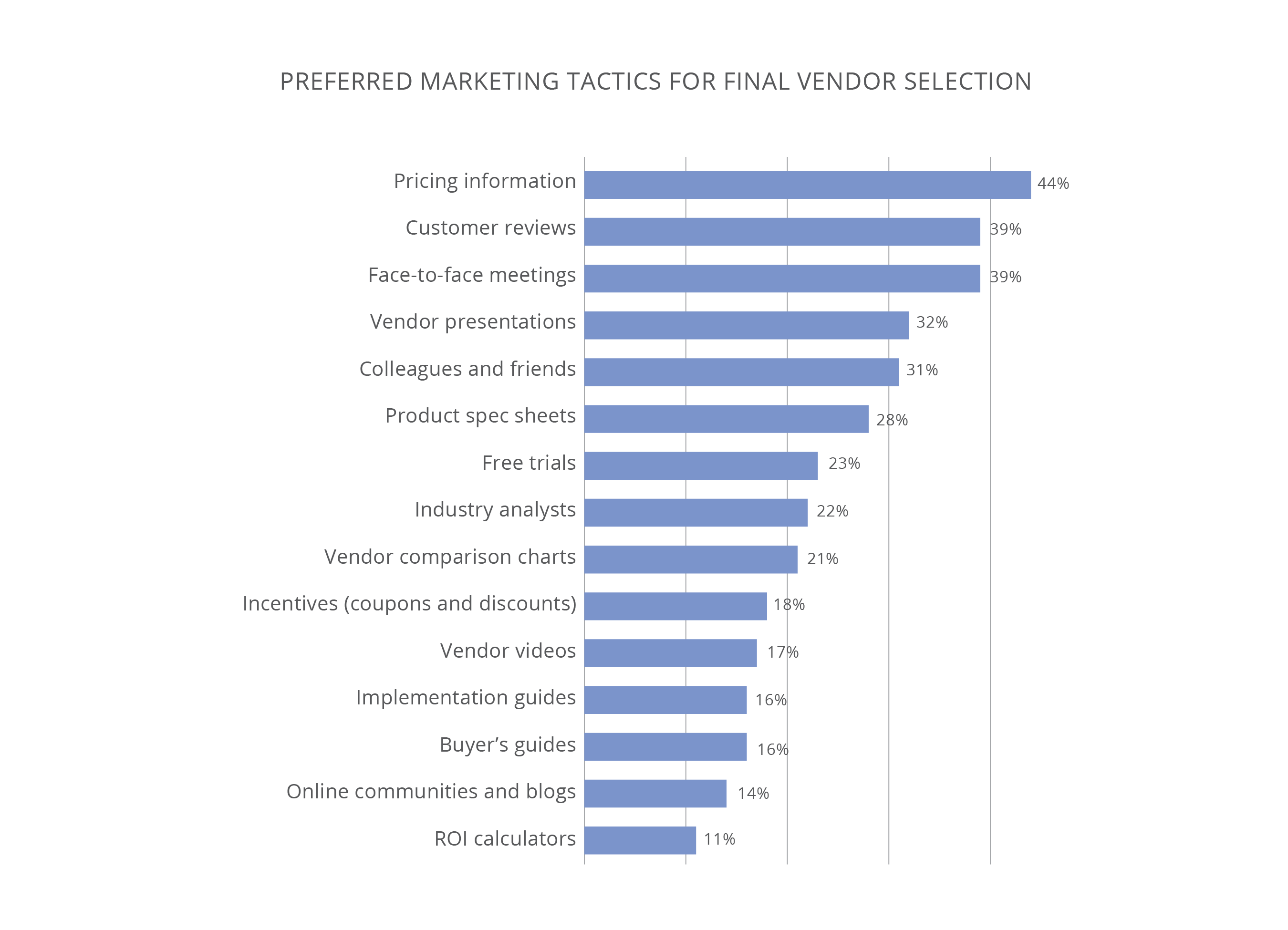Sign up for our LAVY email
and get our bi-monthly newsletter.
This article is a brief abstract of our exclusive study about business-to-business consumers and their preferences about advertising and marketing for technology-related products and services.
Before we can market technology to B2B buyers—before marketing anything, really—it’s crucial to understand purchasing behavior. So, prior to creating an advertising or public relations campaign for B2B tech, we must discover buying preferences. That’s exactly what we’ve done.

No one wants to find themselves stuck in a business deal gone wrong. So, while the price is important in the final selection of technology vendors—with 44% of survey respondents citing it as their top priority—it’s not always the most important.
Larger companies with more than $10 million annual revenue continue to meet face to face and hear vendor presentations throughout the selection process, 49.5% stating a preference to make their final decision on vendors based on those meetings. They expect, and get, personalized information specific to their account.
In contrast, 32.5% of businesses with less than $1 million in annual revenue flagged the absence of face-to-face meetings during the buyer's journey as a possible deal breaker.
By taking time to meet with larger prospects, B2B technology vendors can apply account-based marketing (ABM) strategies to overcome price-point objections with expertly tailored and programmatic solutions. No longer reserved for top-tier clients, B2B ABM is now possible to offer at scale because of the visibility of digital footprints, the processing power of big data and today’s level of automation—touching everything from workflow to execution.

In short, B2B customers have become accustomed to being catered to as consumers with intelligent algorithms—such as those used by Netflix® and Amazon® to predict “what else” they might like—at just the right time. They expect nothing less from enterprise technology vendors.
Meanwhile, an article published by not-for-profit Harvard Business Publishing’s Harvard Business Review® suggests ways to stand out, including taking advantage of social media data to identify highly qualified leads. Then take the time to sift through a few threads to get a sense of who they are and what they need before making the initial contact. It will provide insight most prospects will appreciate. Finally, find ways to engage, evaluating social content types and social channels for effectiveness along the way. Skipping this step can lead to lost sales.
One way to create engagement is to invite prospects to read customer reviews. This marketing tactic was preferred overall among 39% of survey respondents and 45% among businesses earning more than $10 million in annual revenue. Having sufficient positive reviews is significant for effective lead generation.
In the end, technology buyers demand enough information to intelligently consider their options, including a variety of possible specifications and how each impacts performance—and take each of these into account in addition to price.
Savvy technology marketers, like you, will take this into consideration.


This article is a brief abstract of our exclusive study about business-to-business consumers and their preferences about advertising and marketing for technology-related products and services.
Sign up for our LAVY email
and get our bi-monthly newsletter.